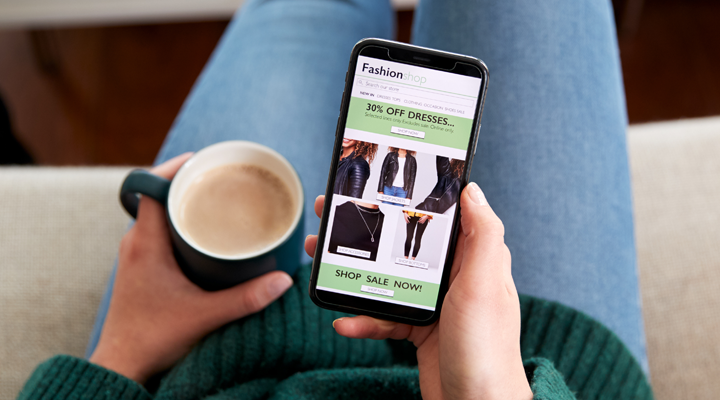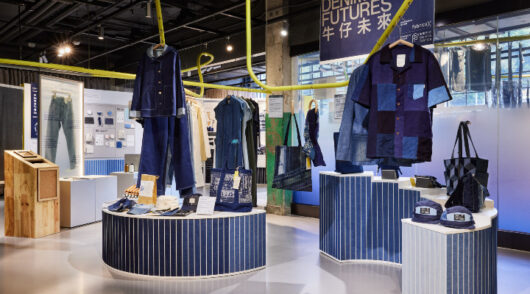With the rapid evolution of digital channels and online shopping, a global pandemic, and supply-chain challenges, retail is evolving at an unprecedented pace. Customer expectations of engagement and experience in retail are changing equally quickly.
Not that long ago, walking into a carefully organised grocery market, hearing a pianist perform in the centre of a high-end department store, or having a retail associate help guide you represented a good retail customer experience.
Such retail features may endure, but they no longer define the customer experience, explains Darryl Bolduc, senior director, product, at Acoustic.
“The content you provide, the helpful resources you offer, and the personalisation you deliver along the buying journey define the customer experience and build brand affinity,” he tells Inside Retail.
“To win in retail, you can’t just have a winning online store. You have to win everywhere.”
Where in times past the physical store retailer’s mantra was having the right product at the right price at the right time, in today’s omnichannel era, that challenge is a lot more complicated, stretching to engagement, messaging and communication strategies – it’s no longer about just stocking product.
Today’s successful retailers have to provide “much, much more than what you are selling,” emphasises Bolduc.
“Whether that’s tutorials, reviews, forums, warranties, recommendations, support, packaging, or just more info than the next site. One stop for all the know-how is better than trying to find it elsewhere,” he explains.
“There is an inherent value in the more directly addressable channels, allowing additional insight, intent and metrics that go far beyond the more typically unknown audience-based channels.”
Acoustic is a marketing and analytics software company that specialises in creating personalised, multi-channel engagement through its Acoustic Marketing Cloud service; optimising and analysing the digital experience through Tealeaf by Acoustic; and, using AI, optimising retail price and promotions through its DemandTec by Acoustic service.
Bolduc says that orchestrating the customer experience in the retail industry is the key to customer retention and revenue growth today.
Data is key
Of course, that requires knowing the customer well enough, which requires data – something Acoustic describes as a retailer’s “golden ticket”.
“The first principle of orchestrating the customer experience, in any industry, is that data must be the central point of your strategy. For retailers, your data is the foundation of your marketing, customer support, channel optimisation, loyalty programs, and more – everything that goes into your revenue growth and retention. Without a solid customer data platform (CDP) that can seamlessly connect with your marketing automation platform (MAP), it’s nearly impossible to compete in today’s digital, data-first market. Clean, holistic data is table stakes, and you need the tools that enable you to leverage this data effectively.”

Bolduc says ‘data paralysis’ is a real thing.
“One area I always advocate investing ample time in is building a useful subset of marketing data services that make for a marketing-friendly environment, no matter what marketing or advertising technology you are talking about.”
Obtaining that data is becoming more of a challenge given the Apple iOS 15 release and the looming end to support for third-party cookies. To compensate, retailers must look to new sources for data.
Bolduc says Acoustic is recommending several solutions to overcome these challenges.
“Retailers need to get comfortable with new ways to measure effectiveness,” he explains. “That might include an engagement scoring model, it might be the combination of more definitive metrics like click streaming combined with a site visit, removing or partitioning the understanding of non-human metrics, or the addition of soft metrics. Garnering first-party data directly from user actions will bring brands closer to zero-party data metrics where customers are telling you exactly how you did.”
“Contextual analytics are crucial,” he explains. “Using first- and zero-party data that consumers want to provide will help retailers and marketers to create engaging campaigns.”
Brands must exchange value when customers are willing to provide information. “Gated content is a proven tactic, but being helpful is an even better method. Think about using a low-cost service – features like ‘add to list’ or ‘save for later’ because that way customers are very willing to provide valuable insight about their intent.”
The role of SMS
Opt-in text messaging is another means to engage with customers – but make sure they are not directly promotional or annoying, he says. “Don’t over-use the channel.”
Some 7.26 billion people use mobile phones today, which makes mobile marketing one of the best ways to reach shoppers and create a superior experience. While app-based mobile push and SMS tactics are important, SMS marketing can work equally well for those who do not have a mobile app strategy in place.
“It’s a powerful tool for real-time communications, with 90 per cent of SMS messages read within three minutes of a consumer receiving them. With the proper controls, SMS can provide anything from a single personalised moment of engagement to a full-fledged community-building channel.”
Acoustic suggests using SMS in five key areas:
- Supporting a “buy online, pickup in-store” (Bopis) strategy, which is increasingly important for retailers amid supply-chain challenges.
- Answering customer service questions such as what your store hours are or what your return policy is.
- Sending real-time order confirmations and shipping updates.
- Providing information on special services or sales.
- Requesting online product reviews once customers receive their purchases.
Gathering more data about existing and potential customers helps brands make more informed decisions around their campaigns.
“For example, marketing in the moment is far more engaging than scheduled blasts. Triggered marketing campaigns based on user actions can lead to more conversions than a segmented email send,” explains Bolduc. “Someone adding hiking shoes to their cart and getting a pop-up to add a hiking backpack is more relevant than an email to someone who exhibited an interest in hiking a few years ago.”
Chatbots can add value
Chatbots also have their role, and consumers have become used to the concept, says Bolduc. But he warns – as with any technology used online – it must be deployed usefully.
“There is a vast difference between implementations of helpful chatbots and those that are just annoying. The best way retailers can help their commerce with chatbots is to ask themselves: Does this add to the value of what we’re selling?.”
Meanwhile, Bolduc says Acoustic has designed its software and solutions to allow marketers to focus on ‘the fun stuff’ – creativity and execution – leveraging tech solutions where possible and leaving number crunching to specialists.
“Our integrated platform allows customers to access all aspects of their marketing in one place, with a simple user interface that makes it easy to craft even the most complex and personalised user experiences.
“We believe that when making real connections is your goal, the conversion will follow. Our technology is designed to help you understand your customers, with analytics tools that bring to life their wants and needs and help guide you on how to meet them where they are.”
You can find out more about the issues discussed above by downloading Acoustic’s ideapaper, Orchestrating the Retail Customer Experience.






